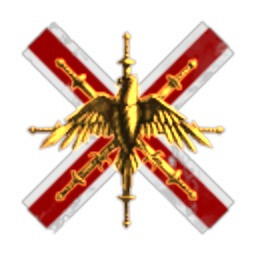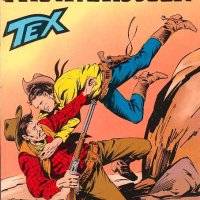Copy Link
Add to Bookmark
Report
Info-Atari16 Digest Vol. 91 Issue 338

Info-Atari16 Digest Mon, 17 Jun 91 Volume 91 : Issue 338
Today's Topics:
Cable to connect Atari 520 ST and Macintosh SE.
DOS emulator for Atari STE
FLESH AND FLESHTOP AUTHORS?
GCC, the documentation...
GFA Assembler wanted.
help on upgrading Atari STFM to 2.5 Megs wanted (please!)
inaccessability of GEM on boot
In search of "MindLink"
TT beginner questions
TT Realtime Debugger ADEBUG ?????
UUPC binaries
welcome to comp.sys.atari.st
Welcome to the Info-Atari16 Digest. The configuration for the automatic
cross-posting to/from Usenet is getting closer, but still getting thrashed
out. Please send notifications about broken digests or bogus messages
to Info-Atari16-Request@NAUCSE.CSE.NAU.EDU.
Please send requests for un/subscription and other administrivia to
Info-Atari16-Request, *NOT* Info-Atari16. Requests that go to the list
instead of the moderators are likely to be lost or ignored.
If you want to unsubscribe, and you're receiving the digest indirectly
from someplace (usually a BITNET host) that redistributes it, please
contact the redistributor, not us.
----------------------------------------------------------------------
Date: 17 Jun 91 17:54:41 GMT
From:
noao!ncar!elroy.jpl.nasa.gov!swrinde!zaphod.mps.ohio-state.edu!think.com!paperb
oy!pnh@arizona.edu (Peter Harbo)
Subject: Cable to connect Atari 520 ST and Macintosh SE.
To: Info-Atari16@naucse.cse.nau.edu
I would like to transmit data between my Macintosh SE and Atari 520 ST
using a cable between their serial ports and kermit or zmodem. Does anyone
know where I can get a cable for this purpose?
Peter Harbo
------------------------------
Date: 17 Jun 91 07:19:31 GMT
From:
noao!asuvax!cs.utexas.edu!swrinde!zaphod.mps.ohio-state.edu!think.com!snorkelwa
cker.mit.edu!bloom-beacon!eru!kth.se!sunic!mcsun!hp4nl!star.cs.vu.nl!theo%cs.vu
.nl@arizona.edu (Theo Vermeer)
Subject: DOS emulator for Atari STE
To: Info-Atari16@naucse.cse.nau.edu
I've heard that in Holland is no (not yet) hardware DOS emulator available
working with the Atari STE. It depends on how many configurations will be sold.
Does somebody know if this is true, or is there an emulator for sale in an
foreign country.
Theo
--
------------------------------------------------------------
Theo Vermeer Fac. Informatica VU A'dam
Internet: theo@cs.vu.nl Boelelaan 1081 k. S408
Phone: +31 20 548 5392 1081 HV Amsterdam Holland
------------------------------
Date: Mon, 17 Jun 91 09:34:57 ADT
From: Alyre CHIASSON <CHIASSA%UDEM@UNBMVS1.csd.unb.ca>
Subject: FLESH AND FLESHTOP AUTHORS?
To: N <info-atari16@naucse.cse.nau.edu>
Can anyone out there provide information on the programs
FLESH and FLESHTOP such as the authors, their address and
shareware fee if they are asking one. From what I gather
the first is a bit like HOTWIRE in nature but also allows
you to specifiy a keyboard with your application. The
second is a file copy utility that works withthe former
program. This would be of great use in my case as I
deal with french, english and norweigan text, mind you
not all at once!
------------------------------
Date: 17 Jun 91 04:25:13 GMT
From: cadence!cadence.com!bammi@uunet.uu.net (Jwahar R. Bammi)
Subject: GCC, the documentation...
To: Info-Atari16@naucse.cse.nau.edu
In article <1991Jun12.124204.19116@uniwa.uwa.oz> ermadmin@uniwa.uwa.oz (Earth
Resources Mapping) writes:
> The few docs that I have seen are in TEX format - that is not a lot
> of help for the people out here whe love GCC but hate TEX!
sorry, all the documentation, both from FSF, and atari specific
documentation from Frank Ridderbusch are in TeX format. It should be
easy enough to run them off though, or view them directly, as they are
just text files.
--
--
bang: uunet!cadence!bammi jwahar r. bammi
domain: bammi@cadence.com
GEnie: J.Bammi
CIS: 71515,155
------------------------------
Date: 17 Jun 91 16:45:55 GMT
From:
noao!ncar!elroy.jpl.nasa.gov!swrinde!zaphod.mps.ohio-state.edu!maverick.ksu.ksu
.edu!ux1.cso.uiuc.edu!ux1.cts.eiu.edu!cfhat@arizona.edu (Henry Taitt)
Subject: GFA Assembler wanted.
To: Info-Atari16@naucse.cse.nau.edu
I am looking for GFA Assembler that was advertised about a year ago before
michtron (I think) lost the GFA's contract. Dose anyone know of a place
I could order this from?
Taitt
------------------------------
Date: 17 Jun 91 14:01:31 GMT
From:
noao!ncar!elroy.jpl.nasa.gov!swrinde!mips!apple!uokmax!munnari.oz.au!comp.vuw.a
c.nz!actrix!Roger.Sheppard@arizona.edu (Roger Sheppard)
Subject: help on upgrading Atari STFM to 2.5 Megs wanted (please!)
To: Info-Atari16@naucse.cse.nau.edu
In article <9106161314.AA15971@lilac.berkeley.edu> CHT510@SATURN.UKC.AC.UK
writes:
> Hi,
> wondered if anyone who has upgraded an Atari STFM with DRAM's could help
> me. I was planning on putting an extra couple of MEG in over the summer
> and wondered if it was just as simple as soldering 16 * 1 MEG chips in.
> I know that the STE is incapable of recognising 2.5 Megs of memory without
> the aid of 'simmfix'. Is the STFM similarly affected when upgraded with
> DRAM's ?
> One last thing. how fast does the access time of the DRAM's have to be.
> Is 120 ns fast enough or does it need 100ns/80ns ?
>
> I would be grateful for any help.
>
> --
> adam whitham,Eliot College,UKC,Canterbury,Kent,CT2 7NS.UK.
> CHT510@saturn.ukc.uk.ac
There are no problems in using 2.5 megs on a STFM, also use SIMMS.
There is a file at atari archive 2_5ram.zoo, on how to do this, this is
by far the better method.
You don't need fast rams or simms 150ns or faster, have a look in
the UK Computer Shopper for simm prices, from what I remember about 30 pounds
for a one meg simms.]
I have just upgraded my STFM1040 to 2.5 Megs , but using simm sockets,
mounted on vero board, I had to remove the first bank of ram, but I
did provide the option to go to 4 megs..
The normal way to do it, is to just stick the simm cards down with
double sided tape, plus some wiring and also removing a bank of ram..
--
*** Roger W. Sheppard * Roger.Sheppard@bbs.actrix.gen.nz ***
*** 85 Donovan Rd * * At least I don't Flicker, not ***
*** Kapiti New Zealand.. * like a dying light globe. ! ***
------------------------------
Date: 16 Jun 91 17:14:31 GMT
From: esseye!jdbbs!wybbs!therip!FredMail@uunet.uu.net (Rod Fulk)
Subject: inaccessability of GEM on boot
To: Info-Atari16@naucse.cse.nau.edu
Its because Gem doesnt get initialized until after the machine is booted..
You need to start GEM programs with startgem type programs or if you have a
tos 1.4 or newer such programs can be installed as auto programs..
~~~~~~~~~ ~~~~~~~~~~~~~~
I am highlighting these cause this is exactly what you do in tos 1.4 or newer..
Running shells from the auto folder will give you a little extra memory but
wont allow access to gem..
* Origin: The R.I.P. (616)235-2313 [HST] (1:228/24)
------------------------------
Date: 17 Jun 91 17:29:45 GMT
From: noao!ncar!elroy.jpl.nasa.gov!sdd.hp.com!think.com!sean@arizona.edu (Sean
Colbath)
Subject: In search of "MindLink"
To: Info-Atari16@naucse.cse.nau.edu
Around 1984, a friend of mine forwarded me a clip he had seen in Popular
Science regarding a new Atari product called "MindLink" that purported to
allow you to control your computer with your mind (read: play video games):
> Quoted from the September issue of Popular Science, an excerpt
> from an article about the latest Consumer Electronic Show
> in Chicago:
>
> '...Atari's "Mindlink" is a band that goes around your head
> and connects with the company's new 7800 video game. Result:
> no joy stick. Just THINK about where your player should be
> on the screen, and it goes there (eventually). It takes
> practice...'
Presumably this is just a piece of hardware that monitors alpha-waves and
you have to train to use it via biofeedback. Does anyone out there know if
this product ever really made it to market? Does anyone out there *HAVE*
one of these (that they'd be willing to sell)?
--
Sean Colbath
sean@think.com ...harvard!think!sean
"...and now for something completely different..."
------------------------------
Date: 17 Jun 91 12:16:01 GMT
From:
noao!ncar!elroy.jpl.nasa.gov!swrinde!zaphod.mps.ohio-state.edu!think.com!yale.e
du!ox.com!math.fu-berlin.de!fauern!forwiss.uni-passau.de!r2d2!friedric@arizona.
edu (Carsten Friedrich)
Subject: TT beginner questions
To: Info-Atari16@naucse.cse.nau.edu
hi
i just got a TT and have some questions.
maybe that most of them already have been discussed, but as i had no TT i
did not pay attention.
My version of Mint (0.6) does not seem to work with the TT is there a version
that does ?
Is there a switch for gcc (my version is 1.39) to use 68030 code, to use the
co-processor and the full TT memory ?
I tried to connect my external 5 1/4'' floppy i used with the st to the tt
but failed. any ideas why ? (i just pulled the plug out of the st
and into the tt, but the tt couldn't handle it. :( )
Is there already any nice tt - pd -software, and where can i ftp it?
Does anyone have some TT documantation, e.g. new tos-routines and
hardware - registers ? If you only have them on paper, i would give
you some money for stamps, if you send them to me. (send e-mail for
adress)
Is there a version of minix running on the TT?
thanx for any replies,
carsten
carsten friedrich, e-mail: friedric@unipa.fmi.uni-passau.de
------------------------------
Date: 17 Jun 91 12:06:31 GMT
From:
noao!ncar!elroy.jpl.nasa.gov!swrinde!zaphod.mps.ohio-state.edu!think.com!yale.e
du!ox.com!math.fu-berlin.de!unido!fauern!faui43.informatik.uni-erlangen.de!faui
09!rdjeline@arizona.edu (Richard Jelinek)
Subject: TT Realtime Debugger ADEBUG ?????
To: Info-Atari16@naucse.cse.nau.edu
Hi !
A few days ago I got special TT-made demo (Realtime 3D-Vektor
graphics). It's really fantastic, but I would like to know, what
on earth is ADEBUG ? This Demo is written for ATARI France and
this Realtime Debugger would be very interesting for me.
Though I don't know how it should work .....
------------------------------
Date: 17 Jun 91 12:46:35 GMT
From:
noao!ncar!elroy.jpl.nasa.gov!sdd.hp.com!think.com!snorkelwacker.mit.edu!thunder
.mcrcim.mcgill.edu!bonnie.concordia.ca!nstn.ns.ca!cs.dal.ca!silvert@arizona.edu
(Bill Silvert)
Subject: UUPC binaries
To: Info-Atari16@naucse.cse.nau.edu
Some local users without ftp access have been looking for UUPC for the
ST and would rather not recompile it. Although I have found archives in
"binaries", they actually consist of source code. Can anyone direct me
to compiled binaries (I've also heard of mercury uucp which flew by on
the net recently with all kinbds of warnings, how is that)?
--
William Silvert, Habitat Ecology Division, Bedford Inst. of Oceanography
P. O. Box 1006, Dartmouth, Nova Scotia, CANADA B2Y 4A2. Tel. (902)426-1577
UUCP=..!{uunet|watmath}!dalcs!biome!silvert
BITNET=silvert%biome%dalcs@dalac InterNet=silvert%biome@cs.dal.ca
------------------------------
Date: 17 Jun 91 13:55:44 GMT
From:
noao!ncar!elroy.jpl.nasa.gov!swrinde!zaphod.mps.ohio-state.edu!caen!spool.mu.ed
u!cs.umn.edu!simvax.labmed.umn.edu!davidli@arizona.edu
Subject: welcome to comp.sys.atari.st
To: Info-Atari16@naucse.cse.nau.edu
Last update: 17 June 1991
Author: David Paschall-Zimbel (davidli@simvax.labmed.umn.edu)
Comments and suggestions welcome.
DIRECTORY (new articles and articles with changes are marked with an '*'):
You may search for the capitalized keywords to find the related article.
WEL Welcome to comp.sys.atari.st
CSAST What sort of articles would interest people reading comp.sys.atari.st?
* PD Where can I get Public Domain/Shareware software?
ARCS How do I deal with Archived files (.ZOO, .ARC, .LZH)?
ERR What does TOS ERROR nn mean? What do the bombs on my screen mean?
PAINT What is the format for [x] paint program data?
GDOS What is GDOS, and where can I get it?
CLI What Command Line Interpreters are available?
TEX Is TeX/LaTeX available on the Atari ST?
LANG Public Domain/Shareware languages...
GNUC Is GNU C available on the Atari ST? How do I set it up once I get it?
FREE What is Free-Net and how can I get access?
MINIX Is MINIX available on the Atari ST?
DEV How do I become a developer for the Atari ST?
ZNET Where can I get copies of ZNET?
PALS ST Pen Pals list
* MAGS What ST-oriented magazines are available for the Atari ST?
* BOOKS What books are available for the Atari ST?
* TIPS TIPS AND HINTS from other users
WEL
Welcome to comp.sys.atari.st
============================
This newsgroup is devoted to discussion about 16 bit Atari micros. At
present that includes the Atari 520ST, 1040ST, Mega ST, STe, STacy, Mega STe,
and the Atari TT. There are also emulators for the Apple Macintosh and IBM
PC/XT/AT available. Finally, there is the Lynx (a game machine) and the Atari
ATW.
Most of the people who read this newsgroup are technically oriented.
The newsgroup serves as a resource for Atari users ... feel free to
contribute to the discussions.
Associated newsgroups include:
comp.binaries.atari.st ! uuencoded binary programs
comp.sys.atari.st.tech ! technical programming/hardware topics
comp.sources.atari.st ! uuencoded/shar sources
CSAST
What sort of articles would interest people reading comp.sys.atari.st?
======================================================================
The most interesting articles are technical articles, impressions of
software/hardware, information on Atari user-groups and shows, or helpful
hints on how to make better use of the machine and its software.
The least interesting articles are in the form of 'my computer is better
than...', especially when cross-posted outside of comp.sys.atari.st. If
you don't know how to eliminate other newsgroups from a reply to an article
which is cross-posted, ask your systems administrator.
'FOR-SALE' articles should be posted to misc.forsale, and ONLY local
distribution of comp.sys.atari.st. Those outside the United States have
little desire to read about that neat bit of [hard/soft]ware you're selling
when you live in the U.S.A. If you don't know how to restrict distribution of
a posting, ask your systems administrator.
Many articles are in the form of "How do I...?" or "Where do I...?" In this
article, I will try to answer some of the most-often asked questions.
PD
Where can I get Public Domain/Shareware software?
==========================================================
There are FTP sources and a comp.sources.atari.st/comp.binaries.atari.st
mail server. You can also try the commercial on-line services such as
GEnie, CompuServe, Delphi and Bix.
Using FTP, most files should be retrieved in BINARY format (at least those
ending with the suffix of .ARC, .LZH, .ZOO, .PRG, .TTP, .TOS)
Mail servers encode files. You will need a program called 'uudecode' in
order to change files ending with the suffix .UUE (or .UAB, .UAC, etc.)
into their original form.
For Mail Service:
archive-server@twitterpater.Eng.Sun.COM:
-------------------------------------
(Panarthea has been moved to a new system called Twitterpater.)
Twitterpater holds all of the comp.sources.atari.st / comp.binaries.atari.st
postings. If you aren't reading these two newsgroups, you should consider
doing so. You may obtain uuencoded files as e-mail. You can obtain a
help file by mailing a message to archive-server@twitterpater.eng.sun.com, with
the main body of the message being the word 'help'.
atari@atari.archive.umich.edu:
-----------------------------
Bart help may be attained by mailing atari@atari.archive.umich.edu and
enclosing the word 'help' in the body of the message. If
you are from a uucp site, please enclose this statement also
'path host1!host2!....', where host1!host2!... is your path.
Please read the help file completely before you ask questions,
and then send any you may have to jon@atari.archive.umich.edu. Jeff
Weiner will only forward them to Jon, so please save him the time.
Any questions about the archive or specific files go to
weiner@atari.archive.umich.edu
For anonymous FTP: atari.archive.umich.edu [141.211.164.8]
User anonymous
<enter password>
cd /atari
For anonymous FTP in the UK: uk.ac.lancs.pdsoft
User pdsoft
Password pdsoft
This is a national public domain archive, available to sites in the UK only
via JANET. Mail access is available from within the UK - send mail to
archive-server@lancs.pdsoft for information.
For anonymous FTP in Europe: ftp.Informatik.Uni-dortmund.DE
[129.217.64.63]
Some selected Atari ST software is in the directory pub/comp/atari-st.
NOTE: The server has moved from unido.informatik.uni-dortmund.de. FTP
requests to the old address direct you to the address given above. I do
not know the current status of the old mailserver, but would appreciate
learning if it still exists.
For anonymous FTP in Europe: cs.uni-sb.de [134.96.7.254]
Contains the most interesting tools of the german PD-scene, most of the GNU
programs ported to the ST (including ports of emacs and bash and an extended
version of bammis library for gcc) and also ports of software posted to
comp.sources.unix, alt.sources and comp.sources.misc.
For anonymous FTP in Europe: archive.cs.ruu.nl
[131.211.80.5]
How to get ATARI-ST/index from the archive at
Dept. of Computer Science, Utrecht University:
NOTE: In the following I have assumed your mail address is john@highbrow.edu.
Of course you must substitute your own address for this. This should be
a valid internet or uucp address. For bitnet users name@host.BITNET
usually works.
by FTP: (please restrict access to weekends or evening/night (i.e. between
about 20.00 and 0900 UTC).
ftp archive.cs.ruu.nl [131.211.80.5]
user name: anonymous or ftp
password: your own email address (e.g. john@highbrow.edu)
cd /pub
don't forget to set binary mode if the file is a tar/arc/zoo archive,
compressed or in any other way contains binary data.
get ATARI-ST/index
by mail-server:
send the following message to
mail-server@cs.ruu.nl (or uunet!mcsun!hp4nl!ruuinf!mail-server):
begin
path john@highbrow.edu (PLEASE SUBSTITUTE *YOUR* ADDRESS)
send ATARI-ST/index
end
NOTE: *** PLEASE USE VALID INTERNET ADDRESSES IF POSSIBLE. DO NOT USE
ADDRESSES WITH ! and @ MIXED !!!! BITNETTERS USE USER@HOST.BITNET ***
The path command can be deleted if we receive a valid from address in your
message. If this is the first time you use our mail server, we suggest you
first issue the request:
send HELP
BITNET users:
LISTSERV@UOGUELPH.BITNET
Mail messages with the contents HELP will bring you some usage information
and GET INDEX PROG-A16 will provide you with a list of files. Subscriptions
to INFO-A16 are also available on this server. INFO-A16 is a digest of
messages from comp.sys.atari.st.
ARCS
How do I deal with Archived files (.ZOO, .ARC, .LZH)?
=====================================================
Files ending with suffixes .ZOO, .ARC and .LZH are archive files. They are
binary files which may contain one or more other files in a compressed format.
Archive files usually take up less disk space, and for this reason have
become quite popular for transferring large files via modem.
In order to extract the files from an archive file, one must use an archive
program. Here are the correspondences:
ARC Use ARC.TTP
LZH Use LHARC.TTP
ZOO Use ZOO.TTP
These programs are all available via FTP from the atari.archive server, in the
/atari/archivers directory. Recommended files are:
arc.ttp - needed to extract the other archivers, once.
arc_602.arc - latest version of ARC, with the most fancy features
and quite a lot of documentation
lharc.arc
zoo_bin.arc
Julian Coleman recently (December 1990) uploaded an archive starter pack to
the atari.archive server. His announcement reads:
" I have just uploaded an archive starter pack to Atari.Archive. It contains
the following :
arc / lharc / uud / uue / zoo
U. Michigan monthly posting ( 05 Dec 90 )
The file is 'starter.tos' and is in the form of a self-extracting lzh
archive, so only needs to be downloaded ( in binary mode ! ) and run. The
archive contains sudirectories and needs about 350k when extracted."
This is probably the easiest way to get hold of the various archiving programs
if you have access via FTP and can transfer the binary file to your Atari ST.
The program is located in the main directory (ie. /atari/starter.tos)
There are also several GEM programs which act as 'shells' for the archive
programs. The most popular are Shareware offerings, also available on
atari.archive server. They are:
arcgsh35.zoo - written by Rainer Klute. e-mail will reach him
at klute@irb.informatik.uni-dortmund.de or
klute@unido.uucp, or klute@unido.bitnet
arcshl23.arc - written by Charles Johnson
Both are located in /atari/archivers
The GEM shells are recommended for inexperienced users (and appear to be quite
handy for the experienced user as well!) They require a copy of the archive
program -- in other words you need BOTH the GEM shell *AND* the archive
program in order to use the GEM shell.
Documentation on the use of the archive programs should accompany the archive
files mentioned above. To use ARC.TTP in order to extract these files, use
the command line:
xh xxxx.ARC *.*
where 'xxxx' is replaced by 'arc_602', 'zoo_bin', etc. For example
xh arc_602.arc *.*
will place all files within the arc_602.arc into the current directory. It
assumes you've clicked on the ARC.TTP program from the Desktop and have the
parameter dialogue box on your screen.
In many cases, simply typing a '?' or 'h' will provide an extensive list of
available options.
Source and binary code for archive programs have also been posted to
comp.sources.atari.st and comp.binaries.atari.st. They are available via
e-mail through the panarthea archive server. See Steven Grimm's posting for
more information on how to obtain files from panarthea.
ERR
What does TOS ERROR nn mean?
What do the bombs on my screen mean?
====================================
The information below was written, in part, by Darryl May, and posted on
GEnie in January (of ????) by John Townsend. The original also appeared in
the June 1988 issue of _Current Notes_ (122 N. Johnson Rd., Sterling, VA
22170). It has since found its way to me, and is being posted to
comp.sys.atari.st as a service to readers.
Alan Pratt wrote to tell me that the basic information may be correct, but
that it cannot be dubbed "official" unless it originates, on paper, from
Atari. This makes sense, as electronic communications are easily
modified, even accidentally.
Roland Waldi provided information regarding the difference between TOS and
GEM return codes which appears to be correct. The tables have been modified
to reflect his information.
The following is an unofficial list of the errors that can appear
while you are operating your ST computer.
Error description return code alert box #
======================================================
OK (no error)....................0
Fundamental error...............-1
Drive not ready.................-2
Unknown command.................-3
CRC error.......................-4
Bad request.....................-5
Seek error......................-6
Unknown media...................-7
Sector not found................-8
No paper........................-9
Write fault....................-10
Read fault.....................-11
General error..................-12
Write protect..................-13
Media change...................-14
Unknown device.................-15
Bad sectors on format..........-16
Insert other disk..............-17
Invalid function number........-32............1
File not found.................-33............2
Path not found.................-34............3
No handles left................-35............4
Access denied..................-36............5
Invalid handle.................-37............6
Insufficient memory............-39............8
Invalid memory block address...-40............9
Invalid drive specified........-46...........15
No more files..................-49...........18
Range error....................-64...........33
Internal error.................-65...........34
Invalid program load format....-66...........35
The last code is the infamous "TOS error 35"!
Also, some unofficial information via Alan Pratt:
Notably, you should add -48: ENSAME (not the same drive, occurs when
you call Frename and the two names you give aren't on the same drive),
and -67: EGSBF: you can't use Mshrink to GROW a block of memory.
Those bombs that appear on your screen are error messages from
the 68000 micro-processor.
Number
Description of bombs
===========================================
Reset: Initial PC2...............1
Bus Error........................2
Address Error....................3
Illegal Instruction..............4
Zero Divide......................5
CHK Instruction..................6
TRAPV Instruction................7
Privilege Violation..............8
Trace............................9
Line 1010 Emulator..............10
Line 1111 Emulator..............11
[unassigned, reserved]..........12
[unassigned, reserved]..........13
Format Error....................14
Uninitialized Interrupt Vector..15
[unassigned, reserved].......16-23
Spurious Interrupt..............24
Level 1 Interrupt Autovector....25
Level 2 Interrupt Autovector....26
Level 3 Interrupt Autovector....27
Level 4 Interrupt Autovector....28
Level 5 Interrupt Autovector....29
Level 6 Interrupt Autovector....30
Level 7 Interrupt Autovector....31
Trap Instruction Vectors.....32-47
[unassigned, reserved].......48-63
User Interrupt Vectors......64-255
PAINT
What is the format for [x] paint program data?
==============================================
There is a periodic posting of ST Picture Formats, edited by David Baggett.
The file is on the atari.archive server under /atari/graphics/picfmts.doc.
GDOS
What is GDOS, and where can I get it?
=====================================
GDOS stands for Graphic Device Output System (at least that's what my copy of
STart, volume 1 number 1 said...)
You can get a copy of "Everything You Ever Wanted to Know About GDOS (and
more)" by Douglas N. Wheeler from the atari.archive server. The file is
/atari/programming/gdos.arc.
There is a German version of GDOS available from the atari.archive server.
The file is /atari/utilities/amcgdos.arc.
Currently, there are no truly public domain sources for the GDOS system files
or font files (at least those supplied by Atari). You can get these files
with many commercial programs, such as Degas Elite, WordUp!, etc. You might
also want to check your local user group to see if they received a copy of the
WordFlair demo program (also available on GEnie). The demo program appears to
have the GDOS system and font files.
CLI
What Command Line Interpreters are available?
=============================================
There are a large number of Command Line Interpreters for the Atari ST.
Some of the more popular ones include:
gulam the 'classic' cli, somewhat UNIX in flavor
BASH GNU Bourne Again Shell - available under MINT
ksh Korn Shell - available under MINT
gemini MUPFEL is the shell used by the gemini environment
okami a German shell with many useful utilities built in
pcommand an MS-DOS-like shell
Check atari.archive under /atari/cli or /atari/mint, or check one of the
other FTP sites for files.
TEX
Is TeX/LaTeX available on the Atari ST?
=======================================
The TeX/LaTeX typesetting programs are available on the Atari ST. Check the
atari.archive server under /atari/tex. Fonts and device drivers
(including one for the Epson 9-pin printers) are available on the
atari.archive server.
The latest version of TeX (3.0) has recently been made available on the
atari.archive server. The files are in a subdirectory of their own.
Graham Higgins recently wrote a message in comp.sys.atari.st indicating the
minimum files needed to get a working TeX/LaTeX system up and running on the
Atari ST. He said:
You'll need, at minimum:
The binaries for LaTeX/TeX :StTeXBin
The style files :StTeXSty
The font macros :StTeXTfm
If you want to screen-preview, you'll need screen font files (showdvi)
If you want to print locally, you'll need printer font files (dvifont)
Allow 5Mb.
LANG
Public Domain/Shareware languages...
====================================
Check the atari.archive server under /atari/languages. Currently included:
abc
apl Demo and 'J' j_29.arc,apl68000.arc
forth Don't know which, I prefer BRADLEY FORTH
FORTRAN77 BC-FORTRAN version 'C' bcf.lzh
icon ICON icon2.arc,icon_bin.arc
modula-2 From Germany modula2.zoo
Sozobon C Most excellant
Elan
xlisp
xprolog
xscheme
GNUC
Is GNU C available on the Atari ST?
===================================
You can also get the GNU C program, which runs on 1 megabyte Atari ST systems.
For more than minor programming, you may need to upgrade to 2 or more
megabytes, as the GNU programs generally assume you've got plenty memory.
GNU C for TOS is available via anonymous FTP on atari.archive. It is also
available via anonymous FTP on cs.uni-sb.de [134.96.7.254] and most of the
other European FTP sites.
How do I set it up once I get it?
=================================
I just spent a bit of time putting the gcc compiler on my hard drive. I
tested it using the good old reliable 'hello.c' program. Here are the
notes I made with regard to installation:
The following files were FTP'd from the atari.archive server:
/atari/gnustuff/tos/gcc139b.lzh
(current file [as of 7 May 91] on atari.archive has a corrupt GCC-CC1.TTP)
/atari/gnustuff/cc1-139.zoo
(good copy of GCC-CC1.TTP)
/atari/mint/mntolb8.zoo
/atari/mint/mntinc8.zoo
(you -might- want to use it with MINT, so why not?)
1. Extract all files EXCEPT 'gcc-cc1.ttp' from GCC139B.LZH (the file is
corrupted in the current version on atari.archive). Place the files in
\EXEC and set the environmental variable GCCEXEC to point to the directory.
2. Extract 'gcc-cc1.ttp' from CC1-139.ZOO and place the file into \EXEC.
3. Extract all files from MNTOLB8.ZOO. Place the files in \LIB and set the
environmental variable GNULIB to point to the directory.
4. Extract all files from MNTINC8.ZOO (including subdirectories!). Place the
files in \INCLUDE and set the environmental variable GNUINC to point to the
directory.
Add the following aliases to your CLI's autoexec file. The following lines
come from a slightly modified 'gnu.g' which came with my release of the
Gulam shell. Check your CLI docs for differences in how environmental
variables, etc. are set!
gnu.g
----- cut here ------
unalias cc
unsetenv TEMP
#
# set up commands for gcc and gas
#
alias cpp d:\exec\gcc-cpp
setenv cpp d:\exec\gcc-cpp.ttp
alias cc1 d:\exec\gcc-cc1
setenv cc1 d:\exec\gcc-cc1.ttp
alias gas d:\exec\gcc-as
setenv gas d:\exec\gcc-as.ttp
alias as d:\exec\gcc-as
setenv as d:\exec\gcc-as.ttp
alias link d:\exec\link
setenv link d:\exec\link.ttp
alias ar d:\exec\gcc-ar
setenv ar d:\exec\gcc-ar.ttp
alias ld d:\exec\gcc-ld
setenv ld d:\exec\gcc-ld.ttp
alias gcc d:\exec\gcc
setenv gcc d:\exec\gcc.ttp
#
alias cc d:\exec\gcc
setenv cc d:\exec\gcc.ttp
alias xcc d:\exec\gcc -Bd:\exec\x
setenv xcc d:\exec\gcc.ttp -Bd:\exec\x
#
alias make d:\util\xmake.ttp
setenv make d:\util\xmake.ttp
#
# bison...
#
alias bison d:\bison\bison.ttp
setenv bison d:\bison\bison.ttp
setenv BISON_SIMPLE d:\bison\bison.sim
setenv BISON_HAIRY d:\bison\bison.hai
#
#
# nm
#
alias nm d:\util\nm.ttp
#
# Flex
#
alias flex d:\flex\flex.ttp
setenv flex d:\flex\flex.ttp
setenv FLEX_DEF d:\flex\flexdef.skl
setenv FLEX_FAST d:\flex\flexfast.skl
#
# General
#
setenv GNULIB d:\lib
setenv GCCEXEC d:\exec\gcc-
setenv GNUINC d:\include
setenv TEMP g:
------ cut here --------
OTHER FILES YOU MIGHT WANT/NEED:
FLEX.ZOO - lexical analyzer
BISON.ZOO -
DOCUMENTATION.ZOO - some nice-to-have documents in TeX format
DIFF115.LZH - can handle binary files as well as ASCII files
RCS5AP1B.LZH and RCS5AP1M.LZH - Revision Control System
GULAM.ARC - one of many CLIs which will work with gcc
Like I said, I successfully compiled a program using the above procedure
(and I didn't have bison or flex or the documentation or RCS or diff...) so
it is the minimum you need to do to get going.
If anyone has corrections, additions, suggestions about these directions,
please send me e-mail so I can incorporate them into the next 'welcome to
comp.sys.atari.st' ... I'll be working on minimal TeX / LaTeX instructions
next.
FREE
What is Free-Net and how can I get access?
==========================================
A "Remodeled" Atari S.I.G. Opens
By now many of you have heard of the Cleveland Freenet, or more
specifically the Atari S.I.G. on the Cleveland Freenet. For those who
haven't, the Cleveland Freenet is an experimental computer system providing
free public community telecomputing. Basically, it's a lot like a public
library of the future. Many of these systems are popping up all over the
country. Don't be surprised if one pops up in your neighborhood in the
future.
Recently the Atari SIG has undergone a significant face-lift. All
the regular areas are intact including its news sections, user group
newsletter, online magazine sections, general as well as specific
computer discussion boards (8 bit, 16/32 bit, Lynx, Portfolio), and our
weekly Sunday night multi-chat conference.
The conference starts at 8pm EST sharp and is on channel
"+Ataricon". What the staff at the Atari SIG has added, has given the
Atari SIG the potential to cover all grounds of Atari and its related
products.
The most noticeable addition to the Atari SIG is the Programming
and Development Forum. This forum is intended to be used by developers,
professional programmers, and Atari hackers (the old definition of
"hacker") as a means to share ideas, help each other out, and find out
the latest technical information on Atari's products. This board is ran
by newly acquired SIG Operator, Peter Haller, a professional programmer
who is running developer sections on hardware and software development,
programming, MIDI applications development, Graphics Design,
plus many other sections that can definitely become a programmer and
developer's dream come true!
Last, but definitely not least, the Atari SIG has a restructured
Product Info and Support Board and a new Special Applications Board.
The Support Board includes a vast library of support lists. These lists
range anywhere from phone numbers of Atari dealers and producers, to
software reviews for 8 bit, 16/32 bit, Lynx, and Portfolio software.
To sum it all up this area covers what's out there, who makes it, and how
to get it for all Atari products. The Special Applications Board is
just starting out. Currently there is an area for users of MIDI on the
ST. MIDI users are encouraged to use this as a means to discuss MIDI
related topics. This section is expected to expand in the future.
Accessing the Atari SIG has never been easier. One can access it
via Internet by telenet'ing to 129.22.8.75 or "Freenet-in-b.cwru.edu"
or by calling (216) 368-3888 300/1200/2400 bps. Once on the system,
a user can apply for an account application and logon as a visitor.
Once here, simply type "Go Atari" to get to the Atari SIG. A visitor
can go anywhere on the Freenet and can read anything. They can't
post messages until they get their permanent accounts, however.
For additional information on obtaining access to Freenet write to
myself via the e-mail addresses above or by writing the SIG at its US
mail address:
The Atari SIG
P.O. Box 21815
Cleveland, OH 44121 USA
Lastly, a freenet application is available in the mail by writing a
request to the above address if you rather not download it from Freenet.
The Atari SIG is ready to serve the thousands of Atarians throughout
the world. We look forward to seeing you all real soon! Remember the
staff of the Atari SIG are volunteering their time for no pay and the
Cleveland Freenet, as well as the Atari S.I.G., is a non-profit organization
existing for the free exchange of information.
--
Mark Leair
Atari SIG Public Relations
Internet e-mail: aa338@Cleveland.Freenet.edu
CIS e-mail : internet>aa338@Cleveland.Freenet.edu
MINIX
Is MINIX available on the Atari ST?
===================================
MINIX is a UNIX-like operating system for the IBM PC, XT, AT, 386,
and PS/2, as well as the Apple Macintosh, Commodore Amiga, Atari ST, and
later in 1991, Sun SPARC. It is available with all the source code for
the entire operating system, the libraries, and nearly 200 UNIX-like
utilities.
Demonstration disks for the IBM PC line and Atari ST are available for free
via anonymous FTP for people on the Internet. A Macintosh version will be
online soon. (If you can't wait, see below.)
To get a free demo disk and the manual, use ftp to connect to
ftp.cs.vu.nl (192.31.231.42) and look in pub/minix/demo. The READ_ME
file describes the contents of the directory and how to use it. Be sure to
fetch and read this first. It contains important information.
If you don't have FTP access, you can buy the demo disk package from Prentice-
Hall for $10 by calling (201) 767-5969 or FAX (201) 767-5625. Please DON'T
ask me to send it by email. I have quite enough work already thank you.
The ordering numbers for Prentice-Hall are:
- MINIX 1.5 IBM demo disk (0-13-582768-x) (in stock now)
- MINIX 1.5 Atari demo disk (0-13-582792-2) (in stock now)
- MINIX 1.5 Macintosh demo disk (0-13-582784-1) (in stock now)
Please note that although the demo disks are available for free on line,
MINIX itself is copyrighted software and is not available on line. The
demo disks are also copyrighted, but permission is hereby granted to
upload and use them for evaluation purposes. The READ_ME file tells how
MINIX can be ordered.
AS A COURTESY TO US, PLEASE DO NOT FTP DURING BUSINESS HOURS (EUROPEAN
TIME). PLEASE FTP AFTER 11 A.M. EASTERN STANDARD TIME.
If you want to follow the MINIX discussion, read the comp.os.minix
newsgroup, which is quite active and has almost 50,000 subscribers.
Have fun!
Andy Tanenbaum (ast@cs.vu.nl)
DEV
How do I become a developer for the Atari ST?
=============================================
Contact Gail Johnson, Atari Rep Person, (408)745-2568
[UNITED STATES ONLY. IF YOU LIVE OUTSIDE THE UNITED STATES, CONTACT
YOUR COUNTRY'S ATARI HEADQUARTERS FOR MORE INFORMATION.]
Gail can explain the program to you, and send an information packet if you
desire.
Atari has gone to a 2-tier developer membership. The 'higher quality'
developer support goes to commercial developers, and costs $250. The
'no-hand-holding, no announcement of company future products, no access
to discounted hardware' goes to noncommercial developers, at an initial cost
of $125, plus $50 renewal fee each year.
Both tiers receive the ST/TT Developer Kit and all developers have to fill
in an application form and a non-disclosure agreement. Contact Gail for
more information.
ZNET
Where can I get copies of ZNET?
===============================
ZNET on-line magazine is available on CompuServe and GEnie. You can also get
copies mailed to you by sending an e-mail message to
stzmagazine-request@virginia.edu
indicating you wish to subscribe.
They won't get to you on Friday (which is when they're posted), but Greg
Lindahl provides an excellent service to the networking community by sending
these out.
ZNET and some information from the Current Notes user magazine are also
available from the atari.archive server under /atari/magazines.
PALS
ST Pen Pals list
================
Simon Chappell is compiling a list of people interested in exchanging
paper-based mail "of interested parties who could then
keep in touch and prevent themselves losing touch with the ST community
at large (this would be especially easy if someone who still had net
access could summarise current topics or forward news and advice!)"
He is accepting entries in this format:
eg Simon Chappell.
s61304@uk.ac.psw.pa (NOTE: NO LONGER VALID ADDRESS...)
51 Amherst Road, Penny-Come-Quick, Plymouth, Devon, PL3 4HJ. UK.
C, operating systems (UNIX, VMS) & relational databases.
Contact Simon at his paper mail address if you are interested.
MAGS
What magazines are available for the Atari ST?
==============================================
The information here is preliminary. If you've got updates, mini-reviews,
or more information on other magazines, please send them to me via e-mail.
As always, WRITE to a company before sending them money for a subscription.
US mags:
AtariUser, published by Quill Publishing Company
---------
Cover Price: US $1.00 Canada $1.45 UK 1.50 (AtariUser is available for free
[$6.00/50 magazine shipping charge] from participating computer dealers,
bookstores & user groups!)
Subcription Rate: $21.30 US Bulkrate, $41.30 US First Class (there is
currently a $15.00 introductory subscription available for a limited time).
Address: AtariUser, 113 W. College Street, Covina, CA 91723 USA
Current Notes, published by Current Notes Inc.
-------------
Cover Price: US $3.95
Subscription Rate: $27.00/year (Atari clubs registered with Current Notes may
subscribe at $23.00/year) US, $35.00/year (Canadian club members at $31/year)
Canadian, Foreign rate $44/year.
Address: Current Notes Inc., 122 N. Johnson Rd., Sterling, VA 22170 USA
Atari Interface:
---------------
Write for a free sample copy of the Atari Interface magazine
(Unicorn Publications, 3487 Braeburn Circle, Ann Arbor, MI 48108)
AIM is soon to be available in Canada, Europe and Mexico, and should be in
all local WaldenSoftware stores and many bookstores. If your "local"
Atari dealer doesn't have it, he should be able to get it for you...
UK Mags:
ST Applications:
---------------
formerly the ST Club Newsletter, this is now the only
non-games mag in the UK (although see ST World below). Approx. 4,500
copies per issue sold. News, reviews, interviews, tech tips, general
forum, programmers' forum, PD catalogue. DTP'd on an ST. Retains a
'user-driven' feel. Recommended. The associated ST Club runs a PD
distribution service and distributes a couple of commercial programs too
(Fontkit Plus, UIS III, Molgraph, CRL Virus Killer, etc.).
Subscription costs: UK - 15 pounds; Europe - 18 pounds (Air Mail);
worldwide - 28 pounds (Air Mail)
Address: ST Club, 49 Stoney Street, Nottingham, NG1 1LX ENGLAND
ST World:
--------
formerly the leading UK non-games mag. Became a quarterly
'buyer's guide' in Autumn 90. Now, allegedly, about to be revived as a
monthly (under the stewardship of Jean Gollner, mother of ex-editor
Hugh) in the wake of Atari UK's new push into the 'serious' market.
ST Format:
---------
all-purpose 150-page monthly, mainly aimed at young people.
Lively, but of uneven quality. Big leisure section, but other areas
covered too. Includes cover disk - mix of games demos and (usually out
of date) PD utilities. Probably the biggest-selling UK ST mag. Has had
several public rows with Atari UK.
Atari ST User:
-------------
like ST Format. Generally (amongst online users) thought
to be not quite as good.
ST Action:
---------
games, games and more games. And games.
There are ST sections in New Computer Express (weekly), Computer Shopper
(monthly) and some general-purpose games mags whose names I forget.
There are also, I think, some MIDI mags with strong ST content. I don't
have their names.
German Mags:
Atari PD Journal:
----------------
Reviewed in the May '91 issue of Current Notes [from which I'm cribbing this
information, DP-Z]. Hardware and Software reviews, some commercial software
reviewed. Typical issue runs around 90 pages. Special "Katalog" section.
Subscription: DM 70 (normal mail), DM 100 (air mail). Prices may be for
domestic distribution -- write first!
Address: Heim Verlag, PD Abonnement, Heidleberger Landstrasse 194, 6100
Darmstadt 13 GERMANY
ST-Magazin (formerly 68000er):
-----------------------------
(monthly) Typical issue: around 150 pages. Includes DTP-magazine CICERO.
Subscription: DM 77 (domestic distribution); foreign - write for information
Address: ST-Magazin, Markt & Technik Verlag AG, Hans-Pinsel-Strasse 2,
D-8013 Haar bei Muenchen GERMANY
ST Computer:
-----------
11 issues/year, typical around 180 pages
Subscription: DM 80 (domestic), DM 100 (normal mail), DM 130 (air mail)
Address: Heim Verlag, Heidelberger Landstr. 194, D-6100 Darmstadt 13 GERMANY
BOOKS
What books are available for the Atari ST?
==========================================
The (Almost) Complete Guide to Atari Reference Books
Compute! Publications,Inc.
PO Box 5406,Greensboro NC
27403(919-275-9809)
Computes Technical Refence Guide Volume One. VDI
Sheldon Leeman
ISBN 0-87455-093-9
Computes Technical Refence Guide Volume Two. AES
Sheldon Leeman
ISBN 0-87455-114-5
Computes Technical Refence Guide Volume Three. TOS
Sheldon Leeman
ISBN 0-87455-149-8
Learning C. Programming Graphics on the Amiga and Atari ST.
Marc B. Sugiyama and Christopher D. Metcalf
ISBN 0-87455-064-5
Compute's ST Applications Guide. Programming in C
Simon Feild,Kathleen Mandis and Dave Myers
ISBN 0-87455-078-5
Scott,Foresman and Company.
Professional Publishing Group
1900 East Lake Avenue,Glenville IL
600025
Learning C on the Atari ST
Joseph Boyle Wikert
ISBN 0-673-18738-1
Sybex Inc.
2344 Sixth St.
Berkely,CA
94710
Programmers Guide To GEM
Phillip Balma and William Fitler
ISBN 0-553-34397-1
Taylor Ridge Books
PO Box 48
Manchester, Connecticut (no zip listed) usa
(203)643-9673
C-manship Complete, $19.95
Calyton Walnum
No ISBN
"a decent book on programming your st gem/aes/vdi plus other stuff that is
based on the 31 articles that Clayton Walnum wrote for Analog. It was written
on a mega 4 with Calamus."
Addison-Wesley Pub.
68000 Assembly Language
Donal Kantz & James Stanley
ISBN 0-201-11659-6
"An interesting book on 68000 for the Atari (and amiga too, but both in
the abstract)"
atari.archive.umich.edu
Assembly Language Programming
Robert Arp
Disk archives, not published in paper at this time.
"It is an excellent guide to assembly languuage programming. It is very
large and takes quite a while to make a hard copy if you desire to do so.
The file names are arp68k-book.tar (the text) and arp68k-pix.Z.tar
(.img files to go along with the text)."
****************************************************************
*
* THE FOLLOWING BOOKS ARE CURRENTLY OUT OF PRINT
*
Abacus Software,Inc.
5370 52nd Street,S.E.
Grand Rapids,MI
49508
Atari ST Internals
K Gerits,L. Englisch and R. Bruckmann
ISBN 0-916439-46-1
Atari ST GEM Programmers Reference
Norbert Szczepanowski and Bernt Gunther
ISBN 0-916439-52-6
Atari ST 3d Graphics Programming
Uwe Braun
ISBN 0-916439-69-0
Atari ST Disk Drives Inside and Out
Uwe Brawn,Stephan Dittrich and Axel Schramm
ISBN 0-916439-84
Atari ST Machine Language
B.Grohmann,P.eidler and H.Slibar
ISBN 0-916439-48-8
Atari ST Introduction to MIDI Programming
Len Dorfman and Dennis Young
ISBN 0-916439-77-1
Bantam Books,Inc.
666 5th Avenue
New York,New York
10103
Atari ST Application Programming
Lawrence J. Pollack and Eric J.T.Weber
ISBN 0-553-34397-1
****************************************************************
*
* This List can be freely distributed and added to
* All I ask is that people identify the added information as
* their own
* John Henders
* Vancouver,BC
* On Usenet uunet!ubc-cs!van-bc!jhenders
* On ForumST John henders@448
* On GEnie c/o D.LEMAY2
*
* C-Manship & 68000 Assembley Language suggested by Joe Gaudreau [DPZ]
* Robert Arp's Assembley Language book suggested by David P. Forrai [DPZ]
TIPS
TIPS AND HINTS from other users
===============================
Any 'multisync' monitor which handles 70 video fields a second can be used
with the ST; the custom cable involves no tricks, or commercial ones are
available. The original NEC multisync does NOT handle 70 fields a sec.
More than 3 bombs often means more than 1 error, so interpretations are
tricky.
An ST-formatted disk which is not readable by a PC can be made readable by
putting the 3 bytes EB 34 90 (those were 3 bytes of hex) at the beginning
of the boot sector (sector 1 of track 0, I believe). This can be done with
either an ST or PC absolute sector editor.
Some (older) PC-3.5"-drives cannot deal with the short track-header produced
by ST formatters. On those drives, ST-formatted disks are not readable,
independent of their boot sector contents. The other way, however, does
always work: format on the PC.
When using disks formatted on a PC in an ST, make sure to insert and access
a disk with a different serial number in between disk changes.
For those with the 'inaccessible' mouse and joystick ports, a joystick
extender cable will make life easier. The Y-cable joystick extenders make
it extremely easy to keep mouse and joystick connected to port 0, and a
joystick extender cable in port 1 makes for easy hookup after you've moved
the machine.
BARREL is a program which can redirect printer-data to a file. It comes in
handy when your printer is unavailable, and the program does not already
have an option to 'print-to-a-file'. (It is available on the atari.archive
server.)
DBLEFEAT is a program which can redirect disk access from, say, drive A to
drive B. Handy when a program 'hard-codes' the data drive, and you
wish to use your hard drive instead. (It is available on the atari.archive
server.)
===========================================================================
I would appreciate feedback, comments, suggestions for more TIPS AND HINTS,
etc. E-mail can reach me at the following:
davidli@simvax.labmed.umn.edu Internet
davidli@simvax BITnet
-- David Paschall-Zimbel
------------------------------
End of Info-Atari16 Digest
******************************




























